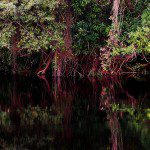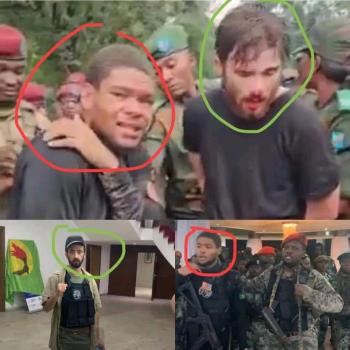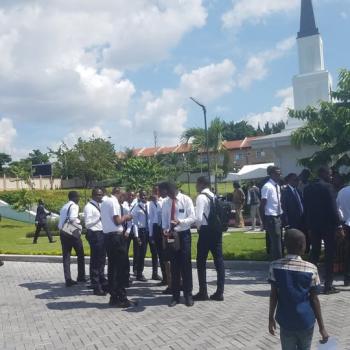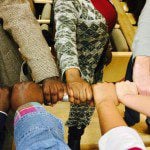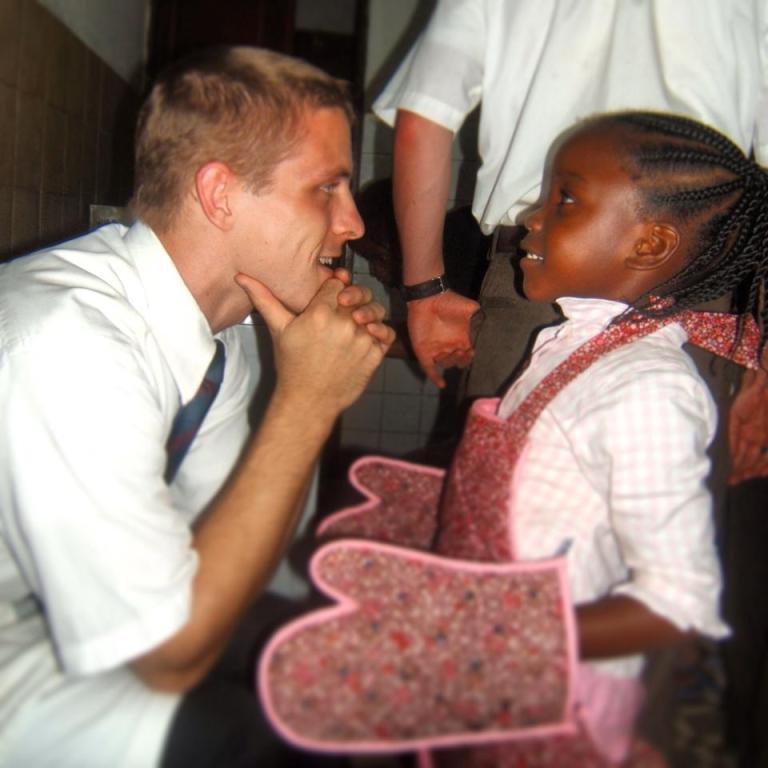Oral History
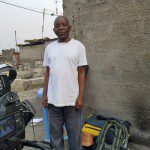 My name is Albert KASHALA Nzolo.
My name is Albert KASHALA Nzolo.
I was born on December 24th, 1962. I was born normally like any other child. However, shortly after my birth, I got ill. It was not just a fever, no. There was swelling everywhere on my face, at the cheeks, at the neck and at the head. These boil-like things were called “bibons.”
After two weeks, nobody could diagnose my sickness. This was the case for about six or seven years. I was taken to nearby traditional and to modern doctors, but nobody could figure out how to treat it. I was taken to famous healers, but no one could cure me. Blood (tofina) kept coming out of my wounds. This sickness affected my ability to eat or absorb nutrition. I could not eat anything on my own, I had to be fed. I was given only a very light broth made from corn. Everything else was liquified so that I could eat it. By the time I was four or five years old, I could eat a little fufu. Because of this, even now I don’t eat much. If you look, you can see the scars which remain from this illness. Of course, because of all this, I was late enrolling in school, and my schooling had many difficulties.
One day, however, I received a goat from my grandmother as a gift. Miraculously, my goat always produced at least 4.3 liters, never just one. That’s what helped me pay for my studies.
Because of my debts due to my illness, we didn’t have enough money to enroll me in the sixth grade. So, on a Saturday in June, during the break, we decided to sell mangoes to pay for our studies. We went everywhere during the hours when almost the whole village was in the field. We went in groups, girls and boys, and we worked.
This is when something happened to me which changed my life. I climbed to the top of a mango tree. It was so high! I could see the whole village and everything around it. As I was looking in wonder at the sight, I lost my grip on the branches. I fell. But I didn’t just fall to the earth; I fell horizontally, chest up. My spine hit a tree branch and was split in two. I was knocked unconscious.
The villagers carried me home, not knowing if I would live. They all waited to see any sign of movement. I looked dead. You should know that I mattered to this village, as my father was a healer, and I was his only son by the woman whom the whole village considered as their own mother. I was to replace my father as the healer after his death, but here I was, apparently dead. They all waited. When I finally moved, everyone broke into applause. I myself was surprised that I was still alive. But of course, I was paralyzed, and my healing was a long ways away.
In the village, there was no way to treat my broken spine. We didn’t have enough money to go to the hospital, and even if we had gone, I would surely have died en route. The villagers decided that I would receive the traditional treatment for a broken back.
They dug a hole in the ground. The depth was equal to my height, up to my neck. Then they picked and pounded vast numbers of hot peppers. I was placed on my back and then covered with these peppers. They wrapped my body in whatever cloth was available—shirts or dresses, whatever they could find. The cloth kept the peppers next to my skin. Then, I was buried up to my neck and a fire was lit behind me. When the fire’s heat reached the spot in which I was buried, the warmth of the peppers penetrated my back. They put me in this hole every day from 7:00 a.m. to 5:00 p.m. This treatment lasted for seven months. It did make me feel better. I knew, however—as everyone knew–that if the treatment did not work, I would die.
After these many days of being buried, the villagers helped me to walk again—to learn what my body had forgotten. One or two would hold my left arm, and one or two would hold my right arm. I would try, but it was hard. I had to re-learn everything. At last the day arrived for me to try to walk on my own. I was set on my feet. I put a foot forward. Then another foot. The villagers were amazed. They cheered for me.
Of course, I could not study during the months of my treatment. The next year, however, I returned to school. I wore a small tree trunk on my back to keep the spine stable.
Eventually, life returned to normal. But, believe it or not, one day, my big brother suggested that we pick more mangoes—but this time nearby, not in the field.
I said, “Take a look at me! What are you thinking?”
He replied, “Don’t worry. I can carry you.”
I agreed to go.
He told me to climb the tree and go pick mangoes. Amazingly, even though I was in pain, I did it. I picked mangoes! And then a tree branch fell on me, hitting me in the middle of my head. Blood spurted like water from a faucet, and my brother and everyone else ran away in a panic. There were a few good people who came to help me. Among them was a man who stripped off his shirt and used it to stop the hemorrhage, which was surely risking my life yet again. He pressed his shirt into my wound. They called for a doctor from the state clinic which had been set up in our village. The doctor gave me a shot to stop the hemorrhage. Everyone knew that if the bleeding continued at this rate, I would die. Amazingly, it stopped. The doctor continued giving me medication until my wound finally healed.
Incredible things have happened to me. Apparently, I was not content to be merely injured. All of my injuries were life-threatening. From the time I was small, I have encountered big problems, never just little ones.



